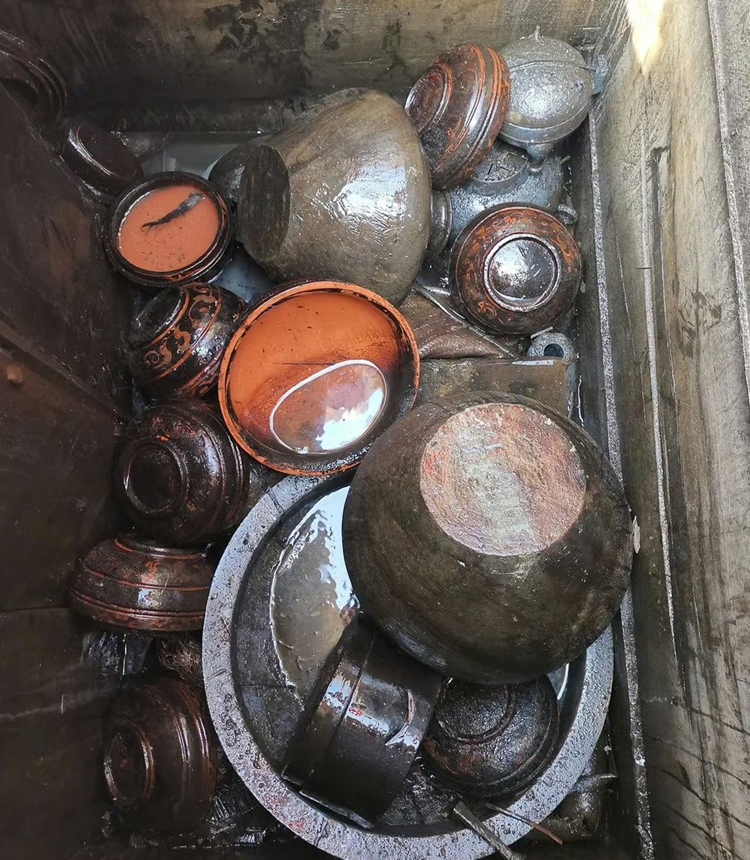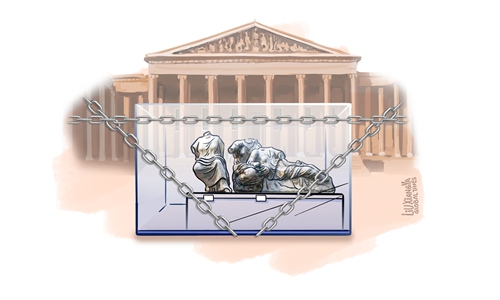ARTS / CULTURE & LEISURE
Research reveals how 'skull and hoof burial tradition' inspired China's integrated ethnic cultures
'Skull, hoof burial tradition' inspired China's integrated ethnic cultures

Relics discovered from Zhengjiahu site in Yunmeng county, Hubei Province Photo: Sina Weibo
Taking the niche archaeological subject of China's "skull and hoof burial tradition" as a focus, a themed research seminar was recently held in Yunmeng county, Central China's Hubei Province.
Yunmeng is known as "the cradle of China's most surprising tomb discoveries," archaeologist He Jierao told the Global Times.
The county's two most representative archaeological heritages are the Shuihudi site and the Zhengjiahu ruins, also known as the Zhengjia River site.
The seminar focused on the study of animal bones like the hoof bones and skulls of cows, sheep and horses discovered at the two archaeological sites.
At both the Shuihudi and Zhengjiahu sites, those animal skulls and hoof bones were seemed to have been choregraphed as burial objects in tombs. Such a placement refers to an ancient burial custom that is called the "skull-hoof bones burial tradition."
Although the tradition was discovered from the two tombs in Central China, Chen Hurong, a frontier archaeologist, told the Global Times that skull-hoof bone burials originated from the ethnic Xirong, or Rong, tribes in ancient times.
"In a simple explanation, Xirong is a generic term to describe the ethnic tribes living around the northwest of China in ancient times. They did not belong to the Central Plain's Huaxia tribes but later developed in connection with Huaxia culture," Chen told the Global Times.
The people of Xirong once lived around what are today's Shaanxi and Gansu provinces. Their special burial tradition has however been spotted by experts at tomb clusters at both the Shuihudi and Zhengjiahu sites.
The tomb clusters date back to the late Warring States Period (475BC-221BC) to the early Western Han Dynasty (206BC-AD25). This was a revelation to experts that these ethnic tribes "had migrated and gradually fused with Central Plain traditions."
"Their migration trajectory is a clear manifestation of the cultural integration of different ethnic cultures in China to converge toward unity," said Luo Yunbing, a chief expert at the event who is also a vice president of the Hubei Provincial Institute of Cultural Relics and Archaeology.
Other than Hubei's Yunmeng county, the skull-hoof burial tradition has also been found in other provinces like North China's Hebei Province and Central China's Henan and Hubei provinces.
"Those scattered archaeological sites can help us picture a fuller image about how ancient Chinese ethnic cultures were distributed," Chen told the Global Times.
The Shuihudi site of the Qin Dynasty (221BC-206BC) has long been considered as an archaeological sensation ever since 1975. A total of 1,155 bamboo slips with writing were discovered at the site. The content of the slips covers law, economy, and cultural regulations of the era.
"It marks the first time in Chinese archaeological history that bamboo slips have been discovered in such great quantity," Chen told the Global Times.
The research event was co-organized by several organizations, including the Hubei Provincial Institute of Cultural Relics and Archaeology, the History Department at Wuhan University and the Museum of Yunmeng County.



